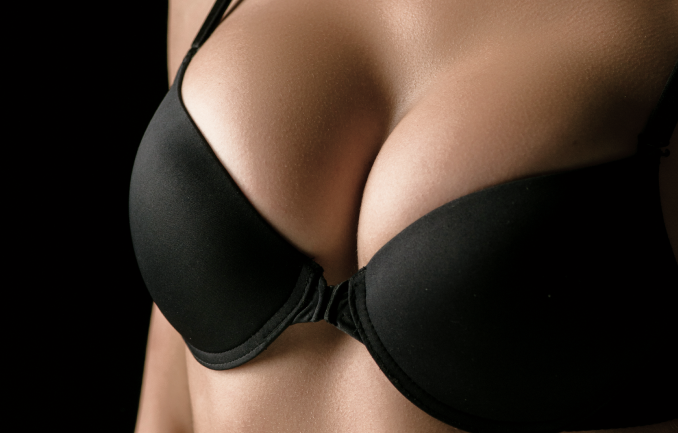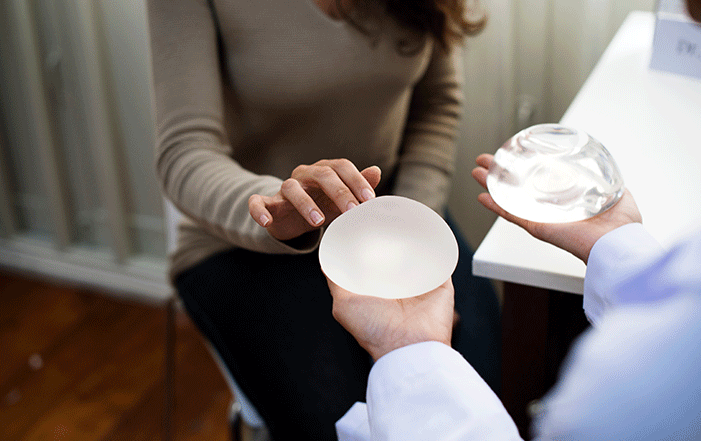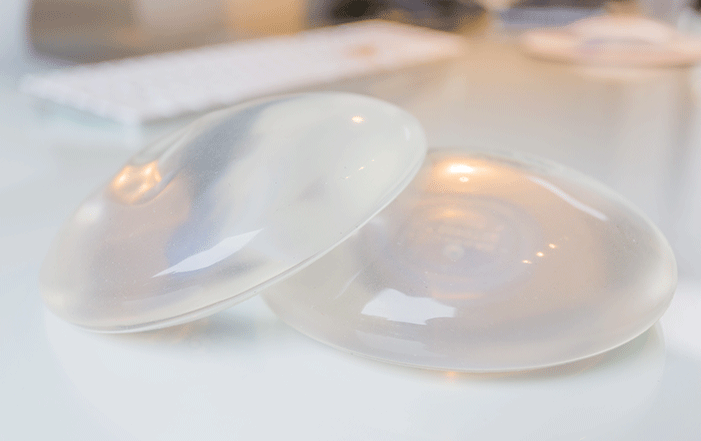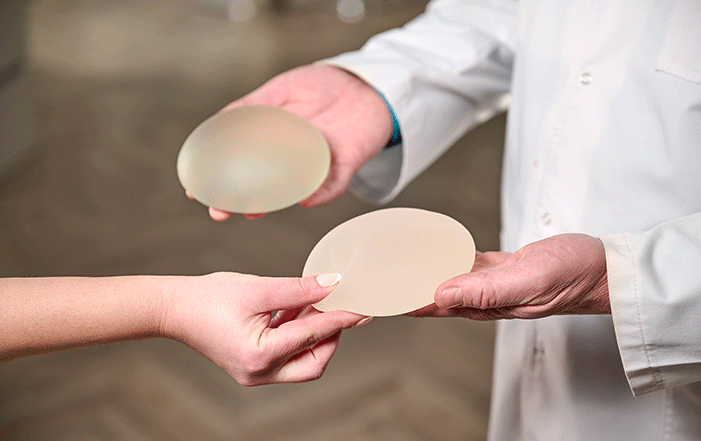Breast Augmentation in Singapore
Our Approach to Breast Augmentation Surgery
Breast augmentation surgery is an intricate and creative endeavour that is more about tailoring your breast size and shape to complement your physique, as opposed to simply getting larger breasts.Our breast augmentation clinic is committed to working closely with you in selecting the right size, shape, and projection for breast implants to create an exceptionally natural look and feel.
Medically Reviewed by Dr Colin Tham
Consultant Plastic & Reconstructive Surgeon
MB ChB (Aberdeen), FRCS (Ireland), FAMS

What is Breast Augmentation?
Breast augmentation, also known as augmentation mammoplasty, is a cosmetic surgical procedure designed to enhance the size, shape, or fullness of the breasts. It is one of the most commonly performed aesthetic surgeries worldwide and can be achieved using breast implants or fat transfer techniques.
This procedure is tailored to meet individual aesthetic goals and is often chosen by women who desire larger breasts, seek to restore breast volume lost due to weight loss or pregnancy, or wish to correct asymmetry. Beyond cosmetic appeal, it can also play a role in reconstructive surgeries following mastectomy or injury.
What are the Benefits of Breast Augmentation?
Breast augmentation offers a wide range of physical and emotional benefits, such as:
Enhanced body contour
Creates a more balanced silhouetteImproved clothing fit
Allows for better fit in dresses, swimsuits, and brasRestored breast volume
Particularly helpful after childbirth, breastfeeding, or significant weight lossImproved breast symmetry
Balances uneven breasts for a more harmonious appearancePsychological benefits
Increased self-confidence and body satisfactionReconstructive support
Assists in rebuilding breast tissue after mastectomy or trauma
While the primary aim is often cosmetic enhancement, many women find that the procedure significantly improves their self-image and overall quality of life.
Why is Breast Augmentation Done?
Women may choose to undergo breast augmentation for a variety of personal, medical, or aesthetic reasons, including:
Enhancing appearance
To increase breast volume for a fuller, more proportionate figure.Restoring volume
To regain breast size and firmness lost after pregnancy, breastfeeding, or significant weight loss.Correcting asymmetry
To balance uneven breast sizes.Post-mastectomy reconstruction
To reconstruct breasts after surgery for breast cancer or trauma.Boosting self-esteem
To improve body image and confidence.
Each individual's motivation is unique, and a consultation with a Ministry of Health accredited plastic surgeon helps to clarify expectations and ensure the procedure aligns with the patient's goals.
What are the Methods of Breast Augmentation?
There are two main techniques used in breast augmentation: breast implants and fat transfer augmentation. Each method has its own indications, benefits, and procedural steps.
Breast Implants
Procedure Overview:
- Consultation and planning The surgeon evaluates the patient's anatomy and discusses implant type, size, and placement.
- Anaesthesia Typically performed under general anaesthesia.
- Incision placement Common locations include inframammary (under the breast fold), periareolar (around the nipple), or transaxillary (in the armpit).
- Implant insertion The surgeon creates a pocket either under the breast tissue (subglandular) or beneath the pectoral muscle (submuscular)
- Implant positioning The chosen implant is carefully placed and adjusted for symmetry and shape.
- Incision closure Sutures are used to close the incisions, and a surgical bra may be provided for support.
Recovery: Patients usually return to work in 1 to 2 weeks, with full recovery in 4 to 6 weeks. Strenuous activities and exercise are limited during the initial phase. Some swelling, soreness, and tightness are expected but subside over time.
Fat Transfer Breast Augmentation
Procedure Overview:
- Fat harvesting Liposuction is used to extract fat from areas like the abdomen, thighs, or flanks.
- Purification The harvested fat is processed to remove impurities and prepare viable fat cells for transfer.
- Injection The plastic surgeon strategically injects the fat into different layers of the breast to create a natural and evenly distributed enhancement.
Recovery: Downtime is relatively minimal. Bruising and swelling at the donor and injection sites are common. Results may take several weeks to stabilize as the body reabsorbs a portion of the transferred fat.
Note: Fat transfer is ideal for women seeking a modest increase in breast size with a more natural look and feel. At the same time, it is less predictable than implants and may require more than one session to achieve the desired volume.
Who is a Suitable Candidate for Breast Augmentation?
Not everyone is an ideal candidate for breast augmentation. A thorough evaluation helps determine suitability. Generally, candidates should:
- Be in good physical health without active infections or untreated medical conditions
- Have fully developed breasts (i.e. after puberty)
- Be non-smokers or willing to stop smoking before and after surgery
- Have realistic expectations about the outcomes
- Desire enhancement for personal, reconstructive, or corrective reasons
- Not be pregnant or breastfeeding
During a pre-operative consultation, the surgeon reviews medical history, performs a physical examination, and discusses the patient's goals to ensure they are a good fit for the procedure.
Common Types of Breast Implants in Singapore
Silicone Implants
Silicone implants are filled with a cohesive silicone gel that closely resembles the texture of natural breast tissue. They are known for providing a soft, natural feel and are less likely to ripple compared to saline options. Because they come pre-filled, they generally require a slightly larger incision for insertion.
One drawback is that if a silicone implant ruptures, it may not be immediately noticeable, and in some cases, imaging such as an MRI may be needed to detect the issue. Despite this, many women prefer silicone implants due to their more realistic aesthetic and tactile qualities.

Saline Implants
Saline implants are filled with a sterile saltwater solution and are typically inserted into the breast pocket while empty, then filled to the desired volume during surgery. This approach allows the surgeon to make minor adjustments for symmetry during the procedure and requires a smaller incision.
One of the advantages of saline implants is that if they rupture, the body harmlessly absorbs the saline, and the implant visibly deflates, making leaks easy to detect. However, they may feel less natural compared to silicone implants and are more prone to wrinkling or visible rippling under the skin.

Round Implants
Round implants are shaped symmetrically and tend to offer a fuller appearance, especially in the upper part of the breast. They are available in both saline and silicone varieties.
One of the benefits of round implants is that they do not pose any risk of shape distortion if they rotate within the breast pocket, unlike anatomically shaped implants. This makes them a popular choice for those seeking a well-rounded, more prominent cleavage.
On the downside, round implants may appear less natural in some women, particularly those with minimal breast tissue or who prefer a subtler enhancement.

Smooth Implants
Smooth implants have a sleek, polished outer shell that allows them to move freely within the breast pocket, mimicking the natural movement of real breast tissue. This mobility often results in a softer, more natural feel, especially when the implants are placed under the muscle.
Because they do not adhere to surrounding tissue, smooth implants may shift slightly over time, but they also reduce the risk of long-term surface irritation. They are generally preferred in round implant designs, where rotation does not affect the breast shape.
The Motiva JOY™ Implant
- Ergonomix2 implants which are softer and more durable vs Ergonomix1
- Always Confident Warranty® against rupture of Motiva implants
- Product Replacement Policy against capsular contracture, Baker grades III and IV for a period of 10 years
- Motiva Extended Warranty: 5 Years Extended Warranty for Motiva Implants with Q inside
- Motiva MinimalScar and Motiva Sleeve
- Exclusive Motiva Bra (Postoperative Ipomia Bra)
- Motiva Ergonomix1 implants remain available upon request
- Is a trusted 5th generation breast implant
- Holds together evenly to feel like natural breast tissue
- Has a set fill volume for predictable results
- Has up to six projection options to suit all preferences
- Has the option of a smooth or textured shell surface
Choosing the Right Breast Implant
The choice of implant depends on several factors, including:
- Desired size and projection
- Body type and chest wall dimensions
- Skin elasticity and breast tissue
- Lifestyle and activity level
- Surgeon's recommendation
During the consultation, patients are often able to try on sizers or use 3D imaging to visualise potential outcomes. This collaborative process ensures that the chosen implant aligns with both aesthetic preferences and anatomical suitability.
Frequently Asked Questions
Not much preparation is required prior to breast enlargement surgery. In most cases, patients are only advised to:
- Avoid blood-thinning medication and food supplements at least 2 weeks before the surgery
- Stop smoking, drinking alcohol or taking recreational drugs
- Undergo regular health screenings to ensure that they are physically healthy with no significant underlying medical conditions
- Refrain from eating or drinking 8 hours before the surgery
- Prepare loose clothing to wear after the procedure
- Due to the drowsy after-effects of anaesthesia and post-surgical pain, patients should also arrange for a trusted friend or relative to accompany them home following discharge.
The recovery period for breast enlargement greatly depends on the type and complexity of the procedure performed. Most patients are also able to return to work after 2 to 4 days.
For both implants and fat transfer, most patients notice visible enhancement almost immediately. Results do take a couple of months to reach their final state.
The breast implants are inserted through small 3+ cm incisions hidden either under the breast, around the areola or in the armpit. The implants are placed either below or above the chest muscle depending on patient suitability:
- Subglandular Placement – Known as over-the-muscle placement, the subglandular placement involves inserting the implants between the chest wall (pectoral muscle) and breast tissue. This technique allows the patient to breastfeed in the future as the implants are placed behind the breast gland.
- Subpectoral Placement – Known as under-the-muscle placement, subpectoral placement inserts the implant above the pectoral muscle and below the breast tissue.
- Dual Plane – Here, the breast implants are placed partially behind both the chest wall and breast gland.
We usually use implants made by Motiva or Mentor. They come with lifetime warranties against breakage. As long as there are no problems with the implants, they generally do not have to be replaced even after many years.
The surgery usually takes about an hour under general anaesthesia and will not require hospitalisation.
You will be asked to come to the clinic about one hour before your surgery. You will then meet with your plastic surgeon, nurses and your anaesthetist. The plan will be reviewed and photos taken. You will go to the operating room and be put painlessly to sleep. In most cases, you will not feel or remember parts of the surgery and most patients are discharged on the day itself.
With breast implant surgery being an invasive surgery, it can come with potential risks such as pain, infection, capsular contracture (scar tissue that forms around the implant), implant leakage or rupture, as well as breast implant illness.
Textured breast implants have also been associated with an increased – albeit uncommon – risk of developing breast implant-associated anaplastic large cell lymphoma (BIA-ALCL).
However, in the hands of an experienced and accredited plastic surgeon, the risks should be minimised, well-communicated and well-managed.
How natural breast implants can feel will depend on the type of implant used and its placement. Silicone implants feel more natural and similar to breast tissue. The ratio between implant volume and breast tissue should also be considered.
In eligible patients, if the implant is placed partially or fully under the pectoral muscle, it may also create a more natural-looking shape.
Following breast implant surgery, one may notice that the breasts will slightly drop during the recovery phase, which is desirable and normal as the implants settle more naturally into place. This is also the reason why implants are inserted slightly higher during the procedure.
Over time, breast implants will sag due to the natural effects of ageing and gravity, but the extent of it will vary across individuals due to differing factors such as the type of implant, amount of breast tissue present, placement of the implant, weight changes and one's natural ageing process.
Pain and discomfort are normal during the first few days after breast implant surgery. However, your doctor will prescribe proper pain relief medications, post-operative care instructions and follow-up appointments to ensure that you are healing properly as intended.

Breast Augmentation Surgeon in Singapore
Dr Colin Tham
Consultant Plastic & Cosmetic Surgeon MB ChB (Aberdeen), FRCS (Ireland), FAMS
Dr Colin Tham is an experienced plastic surgeon skilled in performing breast augmentation surgeries. He is accredited by the Ministry of Health in Singapore and has over 20 years of experience in the field. Dr Tham received extensive plastic surgery training in Scotland, Taiwan, and Singapore; and is committed to providing beautiful and natural-looking outcomes for all his patients.
